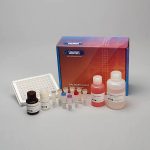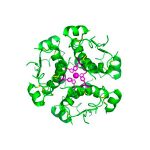Diagnostic Salivary Insulin ELISA Kit
| Specifications |
|
Catalog#: |
1-4410 |
|
Regulatory Status: |
Diagnostic |
|
Format: |
96-well plate |
|
Assay Time: |
~ 1 hr 15min |
|
Sample Volume/Test: |
25 µL |
|
Sensitivity: |
0.39 µIU/mL |
|
Assay Range: |
0.39 – 300 µIU/mL |
|
Storage Requirements: |
2-8°C |
| Tests Per Kit |
|
Singlet: |
76 |
|
Duplicate: |
38 |
References & Salivary Insulin Research
- Goodson, JM, et al. (2014). Metabolic Disease Risk in Children by Salivary Biomarker Analysis. PLoS One. 9(6): e98799.
- Fekete Z, et al. (1993). Salivary and plasma insulin levels in man. Biochem Mol Biol Int. 30(4): 623–629.
- Fabre B, et al. (2012). Measurement of fasting salivary insulin and its relationship with serum insulin in children. Endocr Connect. 1(2): 58–61.
- Hartman ML, et al. (2016). Unhealthy Phenotype as Indicated by Salivary Biomarkers: Glucose, Insulin, VEGF-A, and IL-12p70 in Obese Kuwaiti Adolescents. J Obes. 2016: 6860240.
- Ebbeling CB, et al. (2002). Childhood obesity: public-health crisis, common sense cure. Lancet. 360(9331):473-82.
- Zhao X, et al. (2016). Using Metabolomic Profiles as Biomarkers for Insulin Resistance in Childhood Obesity: A Systematic Review. J Diabetes Res. 2016:8160545.
- D’Adamo E, et al. (2011). Type 2 diabetes in youth: epidemiology and pathophysiology. Diabetes Care. 34 Suppl 2:S161-5.
- Hayashi T, et al. (2013). Patterns of Insulin Concentration During the OGTT Predict the Risk of Type 2 Diabetes in Japanese Americans. Diabetes. 36(5): 1229-1235.

 Contact: Salimetrics (USA)
Contact: Salimetrics (USA)
